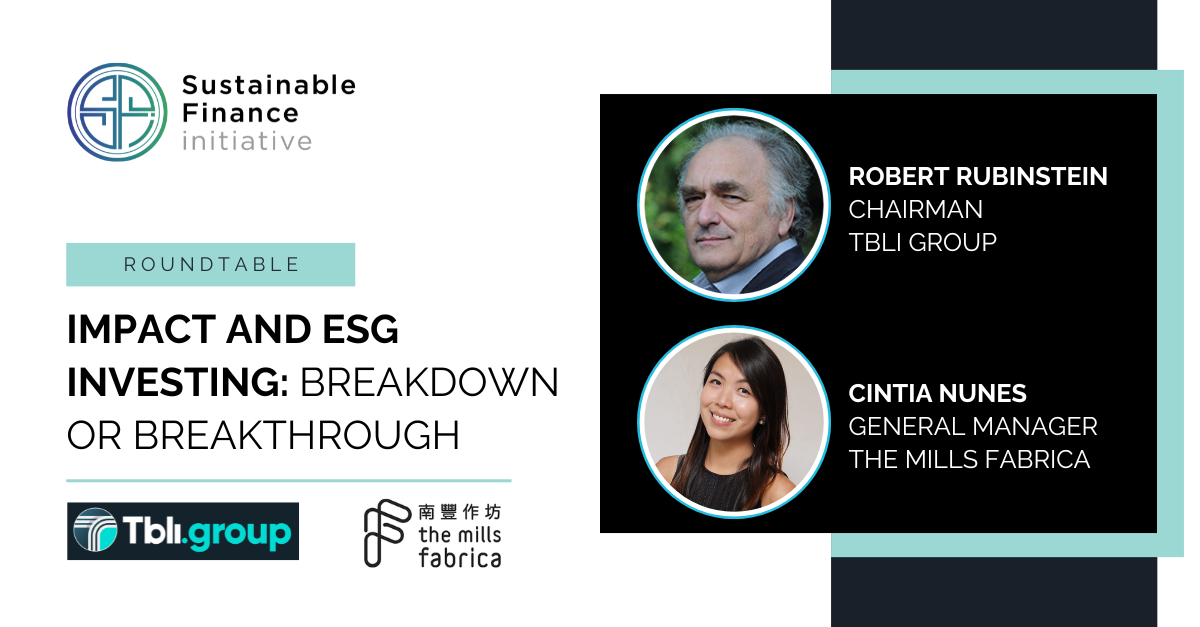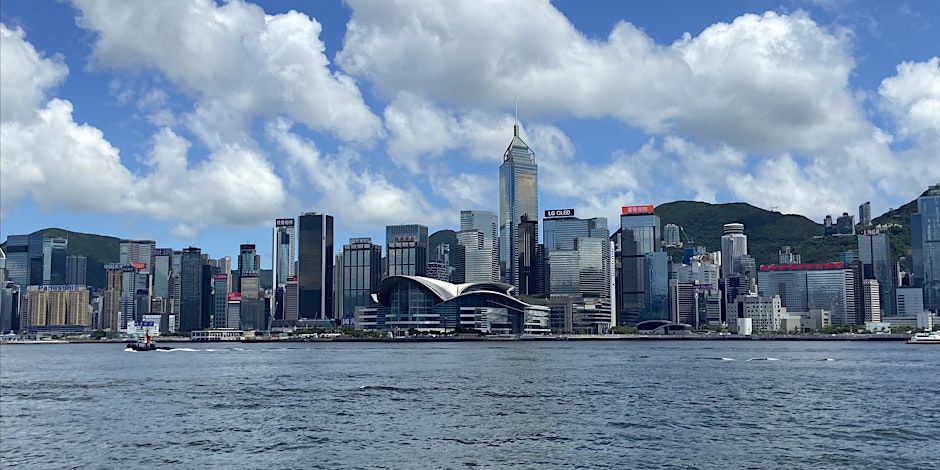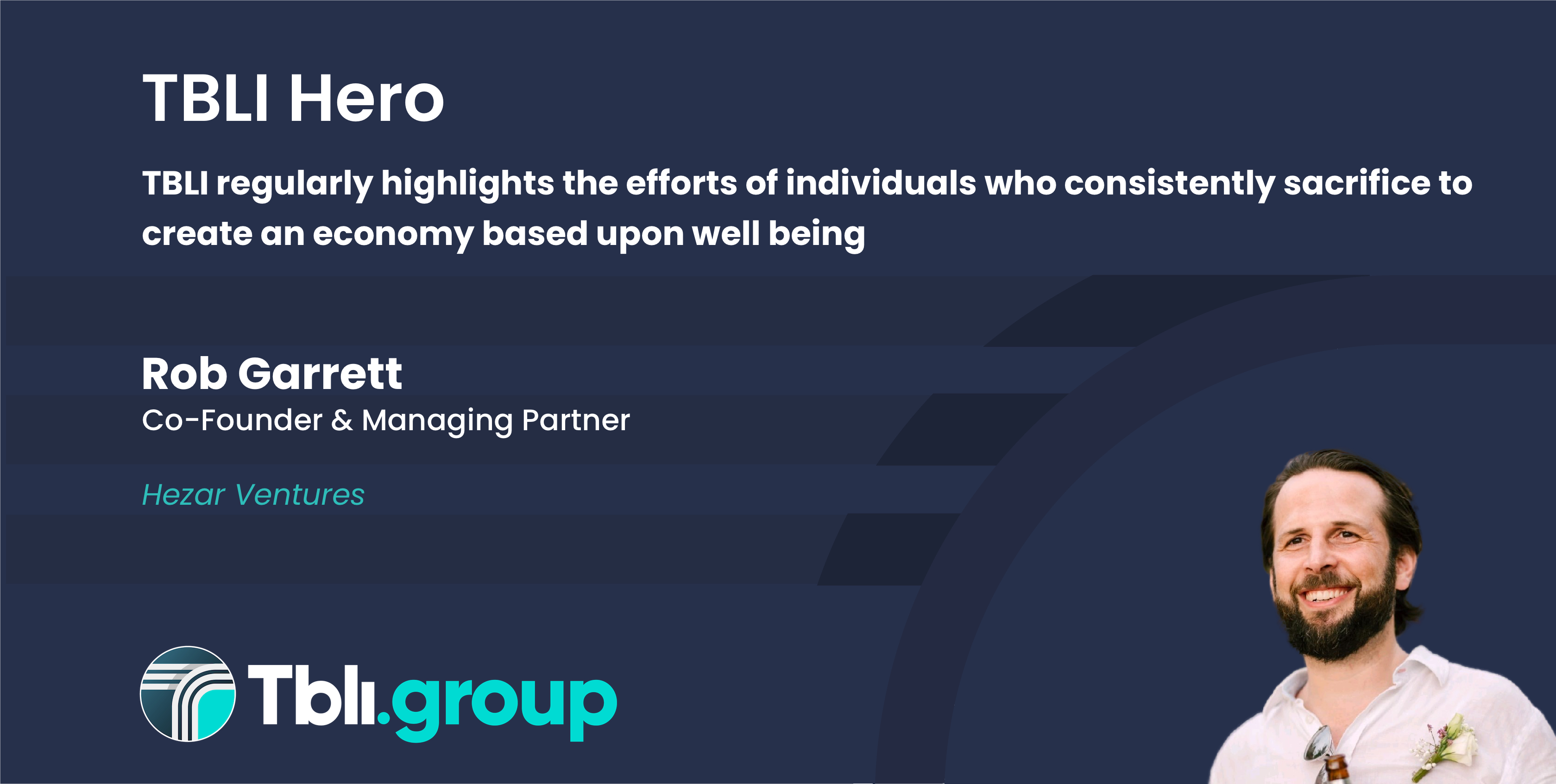
Your weekly guide to Sustainable Investment
Impact and ESG Investing: Breakdown or Breakthrough
Roundtable in Hong Kong hosted by SFI

TBLI's Robert Rubinstein to speak at a roundtable alongside hosted by Sustainable Finance Initiative in Hong Kong.
Join us for an engaging roundtable discussion on the evolving landscape of Impact and ESG Investing. This event promises to be an insightful exploration of current trends and future directions in the field.
Date: Wednesday, 19th February 2025
Time: 5:00 PM - 6:30 PM Onwards HKT
More info & Registration page
ESG and Impact - HKU Alumni Gathering
Monday 17th, February 2025
Join us for a fun alumni gathering to discuss ESG and Impact, a hot topic! Meet Robert Rubinstein of TBLi, catch up with old friends.
ℹ️ Topic: ESG and Impact
🗣️ Speaker: Robert Rubinstein, founder and CEO of TBLi
📍 Location: Café 8, Hong Kong Maritime Museum
📅 Date: Monday 17th February 2025
⏰ Time: 6:30 PM - 8:30 PM
More info
TBLI HERO
''I am delighted to recognize Rob Garrett as a true TBLI Hero. Rob's unwavering commitment to supporting others in our community is nothing short of inspiring. His non-extractive approach fosters collaboration and empowerment, ensuring that everyone has a voice and a role in our mission. Rob is not busy cutting ribbons but doing the hard work to restore the social and environmental balance. Rob's dedication to the TBLI Group goes beyond mere participation; he actively works to change the financial system so that it serves everyone, not just a select few.
His insights and guidance have been invaluable in shaping our initiatives, and his passion for creating a more equitable world resonates deeply with all of us. Rob embodies the spirit of TBLI, and his efforts have had a profound impact on our collective journey. We are grateful for his leadership and tireless advocacy. Thank you, Rob, for being a beacon of hope and a driving force in our mission! Most important you are a true mensch.'' - Robert Rubinstein
2 obscure clean energy metals are caught in the crosshairs of the US-China trade war

After a Chinese export ban, can America get gallium and germanium from Canada — or will tariffs get in the way?
In the summer of 2023, Vasileios Tsianos, the vice president of corporate development at Neo Performance Materials, started getting calls from government officials on both sides of the Atlantic. Within the world of industrial material manufacturing, Neo is best known for making rare earth magnets, used in everything from home appliances to electric vehicles. But these calls weren’t about rare earths. They were about something considerably rarer: the metal gallium.
Neo recycles a few dozen tons of high-purity gallium a year, mostly from semiconductor chip manufacturing scrap, at a factory in Ontario, Canada. In North America, it’s the only industrial-scale producer of the metal, which is used in not only chips, but also clean energy technologies and military equipment.
China, the world’s leading producer by far, had just announced new export controls on gallium, apparently in response to reports that the United States government was considering restrictions on the sale of advanced semiconductor chips to China.
All of a sudden, people wanted to talk to Neo. “We’ve spoken to almost everyone” interested in producing gallium outside of China, Tsianos told Grist.
Since Tsianos started receiving those calls, tensions over the 31st element on the periodic table — as well as the 32nd, germanium, also used in a bevy of advanced technologies — have escalated. In December, China outright banned exports of both metals to the United States following the Biden administration’s decision to further restrict U.S. chip exports.
Now, several companies operating in the U.S. and Canada are considering expanding production of the rare metals to help meet U.S. demand. While Canadian critical minerals producers may get swept up in a new geopolitical tit-for-tat should Trump go through with his threat to impose tariffs, U.S. metal producers could see support from the new administration, which called for prioritizing federal funding for critical minerals projects in a Day 1 executive order. Beyond the U.S. and Canada, industry observers say China’s export ban is fueling global interest in making critical mineral supply chains more diverse so that no single country has a chokehold over materials vital for a high-tech, clean energy future.
“This latest round of export bans are putting a lot of wind in the sails of critical minerals supply chain efforts, not just in the U.S. but globally,” Seaver Wang of the Breakthrough Institute, a research center focused on technological solutions to environmental problems, told Grist.
Gallium and germanium aren’t exactly household names. But they are found in products that are indispensable to modern life — and a fossil fuel-free society. With its impressive electrical properties, gallium is used in semiconductor chips that make their way into everything from cell phones to power converters in electric vehicles to LED lighting displays. The metal is also used in the manufacturing of rare earth magnets for electric vehicles and wind turbines, in thin film solar cells, and sometimes, in commercially popular silicon solar photovoltaic cells, where it can help increase performance and extend lifespan.
Read full article
Nuclear’s Long Shadow In The Philippines
By Alexander C. Kaufman - HuffPost
It’s getting hotter — and more expensive to stay cool — in the island nation. Will it become the first in Southeast Asia to turn to atomic energy?
This story is the first installment of a two-part series on nuclear energy in Asia.
MORONG, the Philippines — On a steamy June afternoon, Jimmy Arquero, 65, took off his red cap, wiped his brow and hunkered down for some leafy shade in a concrete gutter in the middle of town. His blue eyes stared off into the distance, out of focus, and he faded for a brief moment into a daydream of how the last four decades could have been.
In that alternate timeline, the Philippines would have completed work on the nuclear power station he’d helped build in the 1980s, just a 20-minute drive northward. The single reactor at the Bataan Nuclear Power Plant would’ve become Southeast Asia’s first commercial atomic station, vaulting the fast-growing archipelago nation into the club of industrial powerhouses — Japan, South Korea and Taiwan — already powered by nuclear fission.
As a pipefitter in those early days, Arquero was making more than he’d ever earned. He might have gone on to work at a factory or a data center, or some other electricity-thirsty industry that would have been drawn to Bataan — particularly if, as had been planned, that first reactor had been followed by another, and maybe more. He might even have gotten air conditioning.
In reality, right as the plant was about to load its first uranium rods and as a generation of young operators finished their training, Filipinos ― with U.S. backing ― overthrew dictator Ferdinand Marcos, whose government had overseen the project. A month later, the world’s worst and only mass-casualty nuclear power meltdown took place at the Chernobyl plant in Soviet Ukraine. The new democratically-elected government in Manila mothballed the Bataan plant. Arquero lost his job.
Instead, he did what his father and generations before him had done: Arquero farmed.
The land here, in this region on the north side of the Bay of Manila — a place whose name is most often associated with the Bataan Death March, during which Japanese troops slaughtered thousands of Allied prisoners of war — is too parched and mountainous for rice paddies. So he grew squash and melons. As a pipefitter, Arquero made the equivalent of over $420 per day. These days, he said, he’s lucky to pull in $6.
This isn’t his father’s Philippines. It’s hotter. The droughts last longer. The produce grows smaller or withers on the vine. The insects are relentless. The pesticide costs more.
“It’s becoming harder and harder to grow,” Arquero said. “We’re harvesting less because there hasn’t been any rain for months.”
It’s also getting harder to stay cool. Like many here, Arquero can’t afford his own air conditioner. Even if he could, he said, using it would be too expensive. Mostly dependent on imported fossil fuels to run power plants, Filipinos pay among the highest electricity prices in Southeast Asia, and rates keep going up. With tuition bills coming due soon for his four kids, ages 15 to 23, he said he’s trapped in a cycle of debt.
“There’s no money,” Arquero said. “I borrow money from others. When my salary comes I pay them back, then I borrow again.”
The dizzying pull of a debt spiral is enough to make anyone lose themselves, at least briefly, in aching hindsight. What if things had gone the opposite way? What if the Philippines had completed and actually used Southeast Asia’s first nuclear plant?
Arquero might still find out.
The Rise of Nuclear Fear
As much as proponents of bringing Bataan online would like to rewind to 1986 — and even that feels possible with another Marcos, the democratically-elected “Bongbong,” in power — there’s no turning back the clock. The plant, weathered by the sea, has been sitting idle for 38 years, though it still receives nearly $1 million a year in basic maintenance.
But the planet’s literal and political heating-up over the past few years has thawed old fears of nuclear power. The Philippines is now racing against Thailand, Vietnam, and Indonesia to claim its place as the first in this region to join the 30-plus others around the world that use atomic energy. With only limited engagement from Washington, however, Manila has remained open to almost any country ready to help.
After passing two laws to boost nuclear power, the Philippine Congress is considering voting on another two pieces of legislation later this year aimed at setting up a modern atomic energy regulator and offering subsidies to developers. A handful of major U.S. reactor startups are already in talks with Filipino officials. Russian and Korean nuclear engineers have made visits to Bataan to assess whether or how quickly that plant could be revived. A new Korean delegation arrived in October. In December, a team from Canada paid a visit.
UK Charities Offered £15 Million Grant to Redistribute Surplus Food

The UK government has unveiled a new initiative to tackle food waste at its source. The initiative aims to rescue 330,000 tonnes of edible food that would otherwise be discarded or repurposed as animal feed before leaving farms.
The Tackling Food Surplus at the Farm Gate scheme bridges the gap between farmers and charities, ensuring surplus food reaches vulnerable communities rather than going to waste. By providing grants starting at £20,000, the program will enable charities and redistribution networks to scale up their operations, directly sourcing excess produce from farms.
From 7 February 2025, applicants can submit proposals outlining their plans to:
-
Build stronger collaborations with farmers to access surplus food.
-
Expand logistical capacity to transport and distribute rescued produce efficiently.
-
Invest in critical infrastructure such as refrigeration, storage facilities, and transport vehicles to keep food fresh and safe for redistribution.
-
Procure packaging and labelling equipment to streamline the handling of surplus goods.
Circular economy minister Mary Creagh said: “Nobody wants to see good food go to waste – especially farmers who work hard to put food on our nation’s tables. This fund will help charities work more closely with farmers to create new ways to get fresh produce to the people who need it most.
“I encourage our brilliant, dedicated redistribution charities and non-profits to apply for this funding to ensure more British fruit and veg gets to those who need it most.
In a joint statement, the CEOs of The Bread and Butter Thing, City Harvest, FareShare, The Felix Project and Co-Chairs of The Xcess Group said: “As leaders of the surplus food redistribution sector and following years of campaigning, we are delighted to welcome the launch of this fund ahead of British growing season.
“It presents an opportunity to make a profound impact by empowering local charities and community organisations. These groups are the backbone of British society, and we are proud to support them.
“By working across the charitable redistribution sector, we can help ensure that this scheme is implemented efficiently through our joint capacity, delivers tangible value to taxpayers, and helps millions of meals reach as many people as possible at a time of considerable need.”
Read full article
Farmers ‘very worried’ as US pesticide firms push to bar cancer diagnoses lawsuits

Pesticide-backed proposed law that opponents call ‘Cancer Gag Act’ pits Iowa farm groups against each other

